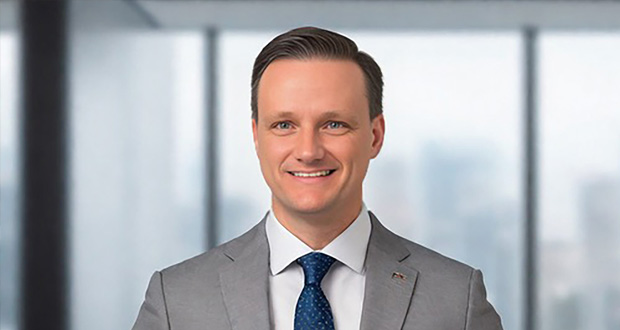Ryan Smallwood, Patterson-UTI: Passion for service drives work to improve drilling safety

By Stephen Whitfield, Senior Editor
For Ryan Smallwood, service to others has been a driving force for most of his life. He remembers being a 20-year-old in September 2001, moved by news footage of firefighters, police officers and emergency crews rushing to get people out of the wreckage of the World Trade Center.
That desire to serve others drove him to study health education with a focus on emergency medical services (EMS) at the University of Utah. He then served for three years in the local fire department in his hometown of Duvall, Wash., and has also participated in multiple charity fundraisers for the Leukemia Lymphoma Society.
Mr Smallwood also sees his career in oil and gas as being service-oriented. He’s held a variety of HSE roles at Patterson-UTI since joining the industry in 2011. While rig safety and firefighting are very different fields, both center around helping individuals; in the role of firefighting, helping others recover from their worst moments and, in the role of rig safety, helping others avoid such moments.
His role at Patterson-UTI, whether it’s assisting with incident investigations, creating safety protocols or conducting rig inspections to ensure compliance, is all about helping people.
Building a career in oil and gas
Mr Smallwood initially joined the oil and gas industry as a rig hand for Patterson-UTI, although he was constantly on the lookout for an opportunity to serve in a more HSE-oriented role. His father-in-law, who was also working for Patterson-UTI at the time, had suggested that HSE would be a great fit for Mr Smallwood due to his EMS training and firefighting experience.
He finally got that chance a year later, when he became HSE Advisor for the Rocky Mountain region. The job involved daily visits to Patterson-UTI’s rigs to conduct jobsite instructions, check for compliance with regulations and train rig personnel on safety protocol. It was then that he realized how valuable his initial time spent as a rig hand was, as he could better relate to the challenges that rig crews faced daily.
“While each rig crew has its own little nuances that needed to be addressed, and those nuances can be challenging, the common thread was that people wanted to do good work. They’re all there for the same reasons. They all want to go home safely.”
In 2014, Mr Smallwood was named Senior HSE Analyst – Policy Development at Patterson-UTI. While he still occasionally conducted field audits and inspections, this job centered on helping the company review and develop HSE policy alongside other departments like technical services, HR and operations. He took on his current role of HSE Manager – Content Development in August 2022, leading a team of HSE Analysts to oversee and create safety protocols for the entire rig fleet, as well as assist with incident response and regulatory audits.
“I love being able to have that 10,000-ft view to create those standards, and then seeing those creations influence people’s lives and help them to do the right thing.”
Involvement with IADC
and views for the future
Mr Smallwood first joined the IADC HSET Committee in 2018, then served as Co-Chair from 2019-2020 and as Chairman since January 2023. Over the past year, the committee has focused “sharing its lessons and communicating,” he said, primarily through encouraging participation in IADC’s Safety Alert program and Incident Statistics Program (ISP).
In January, IADC introduced a new web-based ISP system that gives users direct access to their own and industry aggregate data, as well as the ability to instantaneously create on-demand safety analytics reports.
“I think there’s a lot of potential in utilizing the new ISP system, sending out communications, reaching out to members and encouraging them to participate in different ways,” Mr Smallwood said. “We can really use the data from the ISP to share messages to all the different companies, whether they’re large or small.”
That kind of communication will continue to drive the evolution of safety in the drilling industry, Mr Smallwood noted. It’s also key to his work at Patterson-UTI, in terms of helping rig managers and crews understand the logic behind safety protocols, as well as to understand the challenges rig personnel face in following those protocols. New gadgets and technologies can certainly help to improve safety, he said, but they need to be complemented with communication in order to have maximum value.
“There’s always that next shiny object that’s out there in safety, like wearable technologies, but people are only as safe as their choices,” Mr Smallwood said. “No matter how many policies you adopt or safety devices you use, if your people don’t fundamentally understand and believe in safety, they’re just going to find a new place to redirect unsafe behaviors. We can never lose sight in encouraging and teaching people how to truly believe in safety.” DC




